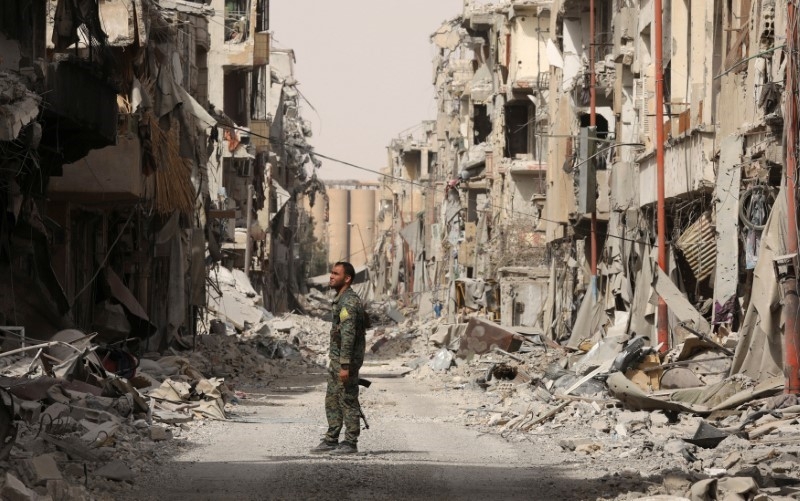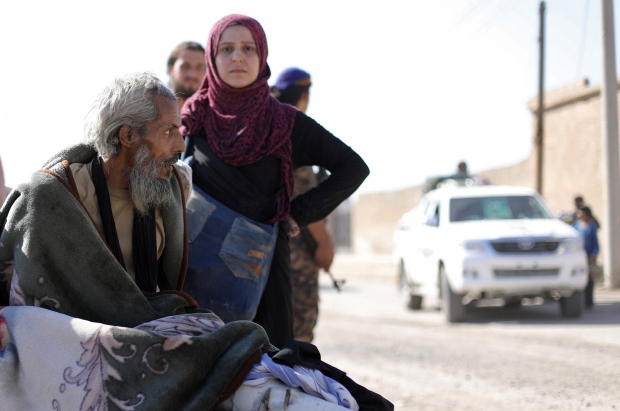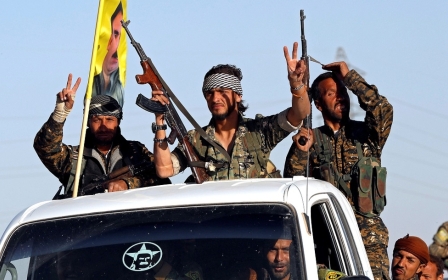After Raqqa, Islamic State in Syria will adapt and reemerge in new forms

The Russian intervention that began in September 2015 has so fundamentally altered the course of the Syrian conflict that today there is virtual consensus that the opposition has been defeated and that a political transition will not take place.
As the Astana process moves the conflict closer to de-escalation zones and a tripartite understanding between Russia, Iran and Turkey of what a post-conflict Syria would look like, questions of regime collapse are no longer contemplated.
Without a doubt, the withdrawal of the Islamic State (IS) from Raqqa, the administrative capital of its aspirant caliphate, has only further strengthened the view that the Syrian conflict is moving towards a new phase.
Battlefield alliances
While armed groups continue to operate inside Syria, they are no longer a serious threat to the regime. Plans for a unified opposition army continue to be trotted out but there is no reason to believe that they will work in 2017 anymore than they would have worked in 2012.
And the emerging consensus around the Astana process ensures that any new visions for Syria - outside of Astana - are unlikely to be viable or taken seriously.
Despite these realities, we should not confuse IS's withdrawal from Raqqa with its disappearance from the Syrian battlefield. For starters, the group was always somewhat of an outlier.
One of the main features of relations between armed groups in Syria was that they have often entered into alliance with each other to capture and retain territory.
IS was seen as anomalous to these patterns because it rarely, if ever, sought battlefield alliances with other groups and was in conflict with opposition, regime, and Kurdish-led forces all at the same time.
While alliance making was a core feature of the relations between armed opposition groups in Syria, so the dissolution or mutation of groups throughout the conflict
Moreover, the IS political project was radically divergent from that of the wider opposition. There was never a pretence that the group shared the opposition goals of overthrowing the regime or taking control of the institutions of the Syrian state.
As such, there was never a possibility that IS would engage in the sort of cooperation - and alliance making - that helped sustain the relevance and longevity of other armed groups in Syria.
Because IS's political project sought to create an administrative entity across two existing states, it was inimical to the political goals of the Syrian opposition at large.
And while other opposition groups found common ground in either their desire to overthrow the regime or their need for military support, there was no such common ground that emerged between IS and other parties to the conflict.
A unique entity
In many ways, then, IS was a unique entity on the Syrian battlefield because it was able to avoid entering into alliances with other groups and it presented a vision for Syria that fundamentally contradicted that of all the other parties to the conflict.
While alliance making was a core feature of the relations between armed opposition groups in Syria, so the dissolution or mutation of groups throughout the conflict.
Even groups such as Jabhat al-Nusra have been forced to respond to changing battlefield dynamics, and have now formed, in alliance with others, Hayat Tahrir al-Sham. Until today, IS has been immune from such transformations, further contributing to its anamolous status.
Unlike in previous years, we may see new IS elements emerge which actively seek out partnerships with other opposition groups
The formal collapse of IS’s current structure will require a reorganisation of the group and its entry into possible alliances which it has hitherto avoided. The group can no longer be seen as a unique party to the conflict but will likely come to resemble other armed elements, as its fighters and commanders disperse and form autonomous armed groups or join existing ones.
As this occurs, what we will witness is not the total elimination of the group but its transformation in response to military circumstances. The lofty goals of caliphate-building are likely to be abandoned for a different approach to the conflict and an attempt to retain relevance that is more concerned with staying power than institution building.
Battlefield adaptation will be inevitable in the coming months in the aftermath of IS’s withdrawal from Raqqa. The question today is what IS’s battlefield adaptation will look like and how will it impact the current state and future of the Syrian conflict.
Possible scenarios
A number of overlapping scenarios are possible, if not likely. First, some IS elements may retreat into the group's remaining eastern territories. There will no doubt be remnants of the project that remain and which retain some form of loyalty to the group. Second, fighters may reinvent themselves in the form of de-territorialised groups and focus attacks against civilians.
This would take IS fighters away from the caliphate-building goals and firmly embed them in the militia landscape of the Syrian battlefield.
Third, the emergence of a new version of IS that is more pragmatic and prone to the demands of cooperation and alliance making is possible. Unlike in previous years, we may see new IS elements emerge which actively seek out partnerships with other opposition groups.
Finally, and most likely, IS fighters and commanders will disavow their former allegiances and seek to embed themselves with existing armed groups.
This could mean joining remnants of the Free Syrian Army, other Islamist groups, or even regime forces. Such changing loyalties would not be uncommon at all; quite the opposite.
Throughout the course of the conflict, groups have relied on absorbing defectors into their ranks. In fact, if most IS fighters were to reemerge within existing groups this would be consistent with how other fighters have adapted to a changing battlefield.
Armed fighters and groups in Syria are remarkably malleable and adaptable to the changing military situation. The circumstances of IS are not exceptional in this sense and its battlefield defeat should not be seen as a nail in the group's coffin or as a sign of imminently reduced violence in Syria.
IS fighters, if not the IS vision, will reemerge in new, differently packaged forms.
- Samer Abboud is an Associate Professor of International Studies at Arcadeia University and the author of Syria (Polity). He is currently a Visiting Scholar at Villanova University's Centre for Arab and Islamic Studies.
The views expressed in this article belong to the author and do not necessarily reflect the editorial policy of Middle East Eye.
Photo: A fighter from Syria democratic Forces in Raqqa taken on September 25, 2017 (Reuters)
This article is available in French on Middle East Eye French edition.
New MEE newsletter: Jerusalem Dispatch
Sign up to get the latest insights and analysis on Israel-Palestine, alongside Turkey Unpacked and other MEE newsletters
Middle East Eye delivers independent and unrivalled coverage and analysis of the Middle East, North Africa and beyond. To learn more about republishing this content and the associated fees, please fill out this form. More about MEE can be found here.






